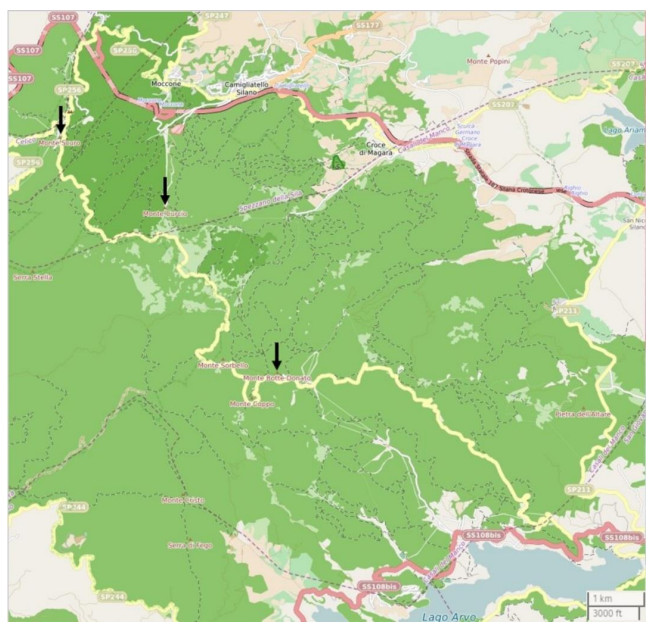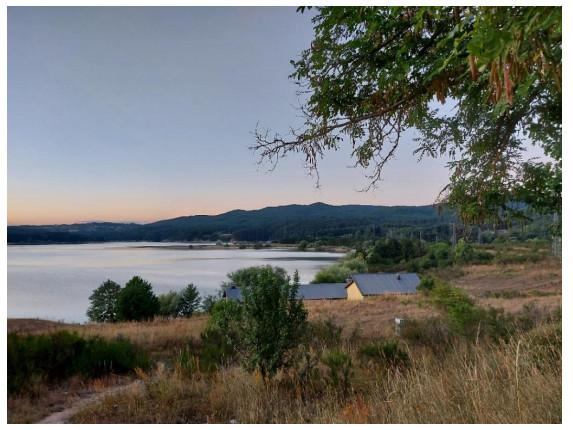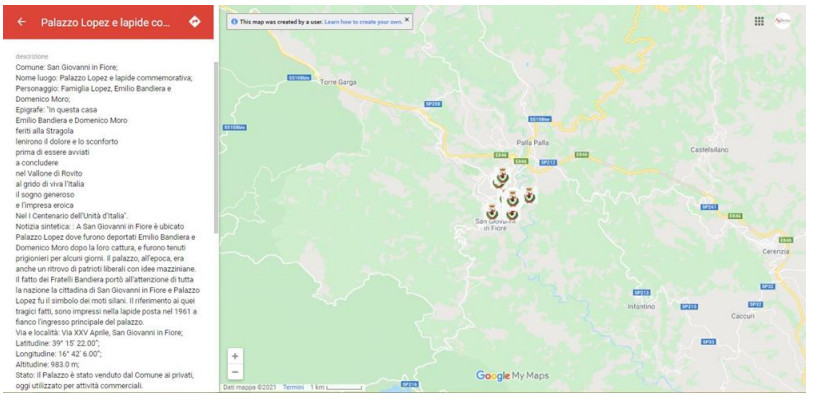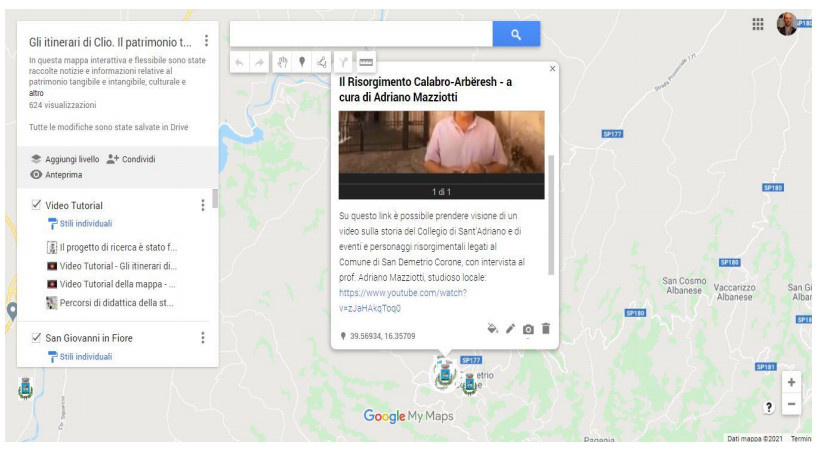1.
Introduction
The global transformation of the educational paradigm, brought about by the development of digital technologies, the creation of jobs and research and educational groups in the digital space, as well as free access to educational resources, scientific research, digital games and virtual libraries, continues to be a driver of systemic changes in the educational environment [1]. Recent technological advances have led schools to introduce innovative teaching methods and approaches that apply immersive technologies. The digital interaction of students and teachers, based on learning management systems (Moodle, RedClass, etc.) and the use of neogeographic technologies (Google Maps, Google Earth), suggest new challenges to guaranteeing high quality of instruction. In addition, the development of multimedia and information technologies opens up broad prospects for the use of digital learning in order to enhance training [2,3].
In an educational context, geography has the potential to play a significant role in furthering the goals of the STEAM (Science, Technology, Engineering, Arts and Mathematics) disciplines, paying particular attention to critical and creative thinking [4,5,6,7]. STEAM allow a level of learning in which interdisciplinarity plays a fundamental role. In a constantly evolving world centered on technology, history and geography, digitization contributes to building participatory and more shared "histories of the present" and overcoming rigid disciplinary boundaries. In fact, these two disciplines offer their own contribution to STEAM approaches, including the physical, social and human sciences. For its part, geography lends itself to a multiplicity of interdisciplinary connections, and this capacity for synthesis must be considered one of its pedagogical strengths. In this context, new interactive technologies in terms of smart mobile devices and related applications have been widely integrated into educational methodologies, raising numerous initiatives for their implementation and their adaptation under the STEAM educational model [8]. Studying geography in schools means inviting students to work with virtual technologies capable of showing connections between subjects, holistic interpretations of places and spatial models, in order to make predictions about future environmental events and phenomena [4]. The synergy between digital technologies and innovative thinking has created various training opportunities for students in the field of history and geography.
In this context a digital thematic map project, titled "The tangible and intangible—cultural and natural—heritage of the Sila National Park area, " is presented as an effective, rigorous, informative and dynamic historical knowledge tool. In fact, the use of Google Maps and the World Wide Web for the dissemination of territorial information and the enhancement of cultural and natural heritage has been a valid tool in accordance with several previous studies (i.e., [9,10,11,12,13,14,15]). Web mapping, accessible from different devices (desktop PCs, smartphones, etc.), can give visibility to a territory and promote tourism, a process accentuated with the creation of virtual itineraries on Google Maps [15,16,17].
The creation of virtual paths can help to easily connect the micro-stories of towns by highlighting the characteristics of their local cultural and natural heritages. Extensive data sharing allows for the dissemination of knowledge and greater awareness among tourists and local communities. Access to this data (through the virtual tour on Google Maps) increases the visibility of a territory at an international level, attracting tourist flows, albeit already considerably high in the summer and winter seasons. In fact, the Sila National Park (Calabria region, southern Italy) (Figure 1) represents a perfect symbiosis between environments and tangible and intangible cultural heritages. Mountain tourism is quite widespread in this territorial ecosystem both in the winter period, due to the presence of snow and ski facilities, and in the summer for the numerous outdoor activities [18] (Figure 1). In addition, cultural tourism mainly linked to local customs and traditions is widespread. Between 2011 and 2017 in Sila National Park, there was an average annual number of 145,000 Italian and foreign tourists staying in an average of 59,000 accommodation units, of which 4% were occupied by foreigners [18,19]. Recently, UNESCO approved the registration of Sila among the reserves of the Italian Biosphere, the tenth in the world network of sites of excellence of the United Nations Organization for Education, Science and Culture [20].
The availability of free and open source IT tools allows the use of methodologies that can also be replicated in other contexts. The use of Google Maps and future data integrations provides increasingly advanced solutions for the refinement and dissemination of the cultural and natural heritage of Calabria. This study, therefore, can be useful to aid the creation of IT tools that potentially allow the dissemination of knowledge of the cultural and natural heritage contained in the territory. However, a real enhancement of the territory can only be achieved through the will and commitment of the local policy-makers and stakeholders in the use and advertising of these tools. This is, in fact, the goal of the Pomara Scibetta Foundation, which supported this project. Research questions developed within the paper include 1) how thematic maps created in Google Maps can be useful for educational purposes and 2) how such maps can be used to enhance the cultural and natural heritage of the Sila National Park, in addition to having promoted an ethics-based and sustainable tourism during and after the COVID-19 pandemic.
2.
The geographical area
The territory of the Sila National Park (Figure 1) is located within the wider Sila plateau and belongs to the mountain system of the southern Apennine chain. The name Sila evokes large and dark forests, waters and green pastures, as imagined by travelers who came into contact with the territory and perceived and avoided the region for centuries [21]. The Sila is a quadrilateral-shaped highland, with its longest side oriented in a north-south direction and the shortest in an east-west direction, bordering on the north with the plain of Sibari, to the west with the Crati valley, to the south with the plain of Lamezia and to the east with the hills of the Marquisate [22]. The area is characterized by a series of wide plateaus, which on average exceed 1,300 meters in elevation and from which numerous peaks rise, the highest of which generally exceed 1,700 meters in altitude. The highest peaks are distributed along a strip that follows the western edge of the plateau, including Monte Botte Donato, which at 1,928 meters represents the highest peak, followed by Monte Curcio (1,768 m) and Monte Scuro (1,621 m) [22] (Figure 2). The territory is commonly divided into Sila Grande, Sila Greca and Sila Piccola, denominations that do not have precise morphological meanings but derive from ancient administrative divisions. The name Sila comes from the Latin silva, demonstrating the richness of forests, since ancient times, of this area, which is still characterized today by extensive larch pine and beech stands. Despite being exploited from Roman times and then over the centuries by humans, which has changed the original characteristics of its flora and fauna, the Silane forests still constitute a natural heritage of great importance and biogeographical interest [22]. Climate on the Sila plateau is cold temperate, descending to a temperate and dry zone at lower altitudes, which gradually passes to a cool but often drought stricken climate in the summer. In the Park area, rainfall and thermal conditions change in relation to variations in altitude and the exposure on the slopes [22].
3.
A brief geo-history of the Sila plateau
The Sila plateau (Figures 1 and 2) is characterized by a centuries-old history that preceded the novelties and changes of the twentieth century, without neglecting the construction of a mythography that has the Magna Sila at its center [23]. As the historian Cappelli points out, at the time of Magna Graecia, the flourishing wealth of sea-side cities was also the result of a balanced use of the territory and the size and compact strength of the woodlands covering the mountains [23]. The name of Sila meant the whole immense Silva Brutia, which, in the geographical awareness of the time, also included the Serre and Aspromonte, constituting the largest known forest in Italy [24]. Equally important is what happened with the decline of the Greek civilization of Calabria, following the Roman occupation. Thus commenced the deforestation of Calabria, in which, according to Placanica [24], the large forest mantle was subjected to an implacable process of reduction. Rome, with its urban fabric and its fleets, needed wood and pitch, which also supplied Calabria thanks to Sila, Serre and Aspromonte. Thus, while the local people were prevented from using the ancient forest and the ancient pastures, a biblical scale disruption of the hydrogeological framework began [24]. Thus, the foundations for an unbalanced harvesting process were laid, one that operated from the early Middle Ages and up to the twentieth century [23]. While malaria gradually took hold of the swampy plains, and the coasts were increasingly marred by pirate raids, banditry took hold among the populations sheltered by the mountains. The latter soon became endemic, especially between the mountains and the passes of the Sila, where the economy of the large estates was based on fallow land and transhumance [23,25].
Specifically, banditry was a complex phenomenon that impacted the history of Southern Italy from at least the sixteenth to the nineteenth centuries [26,27,28,29,30]. Within this complex period, various factions faced each other. In terms of post-unification brigandage, various factions were formed by the supporters of the past Bourbon dynasty (one of the most powerful and oldest ruling houses in Europe and in the world), and Garibaldians (volunteer soldiers who played in the numerous cohorts organized and led by Giuseppe Garibaldi during the historical period that led to Italian unification). Disappointed by the monarchical outcome of the Italian unification, faction conflict involved a strong delinquent component that wrote a fairly dark page of southern Italian history [26,27,28,29,30]. In the seventeenth and eighteenth centuries, dramatic earthquakes almost completely erased the urban features that were built in the Aragonese and Spanish periods by a notable demographic recovery in the sixteenth century after Medieval Age population declines [31]. Disasters linked to extreme natural events culminated in the tremendous earthquake of 1783, which ended up wasting and making Calabrian life wild in the "small towns perched on the mountains or on the cliffs of deserted seas, in the roads without roads, far and lost between" [32] (pp. 368–369).
This was the unfortunate and dramatic picture in which the heart of the Calabrian mountain system constituted by the Sila plateau was increasingly perceived as a threatening, wild and unexplored place, despite the fact that its population growth never ceased [33,34]. Between the eighteenth and nineteenth centuries, the Magna Sila, the gloomy heart of Calabria, become the place of a wilderness on which the romantic literary impressions made by foreign travelers who crossed it would remain for a long time, influencing the emotions of readers comfortably seated in the distant civilized capitals of Europe [23]. From an archaeological point of view, the presence of prehistoric, Greek, Roman and Lombard sites testifies that the Sila was intensely occupied especially in its lower valley regions. These stood on third-order terraces, between 1100 and 1200 meters above sea level, whose surfaces, carved into the silt-clay deposits of ancient lake cycles, contain components of pumice that made the soil of these terraced communities particularly fertile. Among the most important sites is that of Lake Cecita (Figure 3), home to an older lake that preceded the current one but was wider and with a shallower bottom of about 10–15 meters, which was later eroded by the activity of the Mucone-Cecita river complex. Along the banks of the Cecita, precisely in Campo San Lorenzo, there are testimonies told by archaeological sites that commence in the lower to upper Paleolithic, from the Bronze Age to the Roman Republican and Imperial Ages, up to the period of the Lombard Age. Evidence of this is a Lombard spatha and a Lombard scramasax, discovered in good condition, with traces of a mineralized leather sheath (6th–7th century CE) in addition to the remains of the tusk and a jaw of an Elephas antiquus, dating back to approximately 700,000 years ago [35].
4.
Methodology, map features and contents
4.1. Map structure and features
This interactive and flexible map, available on the Google My Maps link (https://istitutorisorgimentocs.com/gli-itinerari-di-clio/), will aim to contain and provide daily updates of all information collected relating to the tangible and intangible cultural and natural heritage of the Sila National Park area (Figures 4 and 5). For each place of memory mapped, the user, by clicking on the locality of reference, will open a pop-up window containing information for each monument, commemorative plaque, memorial stone or building or on anthropological and oral traditions linked to the location, with particular reference to its archaeological history. Data collected and uploaded onto the appropriate pop-up for a place includes the name of the monument, its geographical location, the inscription or the complete engraved epigraph, the date and a historical reference, physical characteristics of the monument and the author of the monument. Each pop-up is also characterized by the possibility of viewing any photographs of the monument and historical documentation linked to it, as well as videos for research and educational and dissemination purposes. This is useful for preserving the historical memory linked to a place—from the point of view of a historical-social and anthropological framing of the territory. Therefore, the identification and organization of places mapped on the platform was aimed at creating an archive of objects, to which the corresponding historical-geographical information can be associated, which contributes in various ways to qualify and characterize the cultural identity of the places. All information was uploaded onto a map created with Google My Maps. In fact, the Google My Maps service allows anyone to produce a map starting with personalized data [36]. The map is divided into ten levels. Each level has been renamed, indicating the locations or municipalities of the Sila National Park to which the tangible and intangible cultural and natural heritage is located or attributable (in the case of intangible cultural heritage) (Table 1). Each location contains a pop-up window with information sheets, photographs, videos or PDF documentation relating to monuments, commemorative plaques, churches, historic buildings, tombstones, historical characters and the archaeological and naturalistic heritage of the Sila National Park or neighboring sites (Table 1). A map with similar characteristics on Google My Maps (https://bit.ly/2Z6EDC1) was created by collecting quarantine testimonies in Italy during the first period of the COVID-19 lockdown [37,38].
4.2. Map contents. Risorgimento and banditry: The main themes
The map presented in this work deals with some events of the brigandage in the area of the Sila National Park (southern Italy). These places have been characterized by the presence of bands of brigands and facts related to them or preservation signs and traces relating to the phenomenon of banditry in monuments and regional topography. The choice to consider the theme of banditry and the Italian Risorgimento as the main focus of the map was derived from the fact that it remains a founding period not only for Italian culture but also for local communities, and it is still very rooted both in public discourse and in monumental memory. Knowing and rediscovering such historical events allows us, on the one hand, to understand the birth of the Italian State and its relations with the territory and, on the other hand, to have a clearer vision of the role that the Calabria region played in the history of Italy. Retracing the history of those years allows us to explore the material and immaterial memory of Italian towns and landscapes. In fact, the history of banditry is intertwined in an essential way with that of the geography of southern Italy. Political and military authorities who found themselves facing the question of banditry have underlined this close relationship. The phenomenon developed and took root not only in certain political, economic, social and cultural conditions but also in relation to the presence of a geographical context characterized by dense woods and an impenetrable natural geography. The Italian writer Vincenzo Padula (1819–1893), in the pages of the "Il Bruzio" journal, in fact, underlined the close correlation between banditry and the natural environment in an article on the construction of the Silana road [39]. The phenomenon, as Padula pointed out, did not develop without the presence of dense woods, mountains, cliffs and a lack of roads, all natural allies of the bands of brigands in Sila [39]. The historical-cultural dimension of the map is intertwined with the desire to provide a research and dissemination tool useful for encouraging the spirit of entrepreneurship in the area, as a territory is improved from an economic point of view by greater public knowledge. In fact, news and videos have been placed on the map that are not related to issues strictly related to banditry but related to knowledge of the Sila's energies and cultural heritage. In this context, the map was also designed for educational purposes and for the touristic promotion of the territory during the pandemic crisis.
5.
Use of the thematic map for educational purposes
5.1. The importance of historical-geographical didactic planning during the pandemic emergency
Good laboratory practices, even if consolidated in many schools, risk becoming "exemplary" and not ordinary practice, for various reasons. They often come into conflict with daily teaching practice. A solution to these problems could come from an attempt by history, geography or literature teachers to "gain" space and time within projects or activities for transversal skill paths and orientation (PCTO, Paths for Transversal Skills and Orientation, ex school-work alternation) or trying to design learning units, where present, for a historical period. It is certainly not an easy task. In Italy, the teaching of history and geography in the school "hierarchy" is almost always "ancillary, " subordinate and marginalized. The current health emergency, however, seems to orient us more towards multidisciplinary didactic planning. This involves making better use of teaching times, avoiding introductory repetitions on some topics and including, as much as possible, transversal knowledge, skills and abilities with certain topics that, traditionally, are designed as watertight pedagogical compartments. Greater coordination among the various school bodies could facilitate everyone's work, greatly reduce the study load of students and make some topics more attractive if developed from different angles and by laboratory teaching [40].
All this could favor a greater possibility of "spaces" and "times" for the teaching of history and geography.
In the case, for example, of projects and PCTO, enhancing the theme of the Risorgimento, in its most diverse forms, could also be functional to the construction of tourist and environmental curricula while at the same time encouraging entrepreneurial skills of the students involved. All this would enhance knowledge of the territory where a school operates, allowing perception of the humanities as an added value in economic planning and the school as a learning community open to the needs of its territory. This choice could be functional not only to "buy time" but also to carry out micro-research on local or territorial history, to be then proposed in subsequent phases as seminars to other classes not taking part in the project. The enhancement of local or territorial history (not only facts and characters but also monuments and natural places close to the daily experience of students) seems to activate mechanisms of greater curiosity, motivation and self-study in students [7]. The members of a class perceive themselves as fundamental actors of the activity, as junior researchers of history and geography. It is an experience that easily allows the transfer of already acquired knowledge and skills that had not been previously valued. A teaching that enhances the relationship between knowledge and skills, in fact, can be functional in teaching history and geography by going "beyond the school." Making students understand how history and geography are imbricated in their lives and within the society in which they live enhances their general understanding of human existence [41]. It should not be overlooked that the possibility of seeing one's own didactic experience embodied in the territory (a seminar, a conference, a video, a small digital published text) where one lives and studies would become a not insignificant precedent in the development of their self-esteem both as students and citizens. In fact, we remain of the opinion that teaching plays a central role in the processes of modernization and the promotion of the tourism and cultural resources of a territory, leading to potential employment. A territory is enhanced and improved only if it is known. All this, however, must also be based on a good training of the teacher, tutor or expert. In fact, while starting from nearby realities, local or territorial, it is necessary to open up to the global and become "glocal" to grasp the great transformation processes and favor comparisons with other realities [40].
5.2. Examples of map's use for educational purposes
In relation to the former school-work alternation (now PCTO), often managed and organized in a way that is not very coherent with its true vocation, we became impressed by how this mapping activity favored the didactic work of the history and geography teacher, precisely in relation to the study of the Risorgimento. The class group, many months before the theme of the Risorgimento was dealt with in class, had been involved in the creation of a historical-naturalistic curriculum based on the relationship between nature and brigandage. In order to deepen this theme, the students, in some cases autonomously, acquired diversified knowledge on the Risorgimento, the formation of the Italian state and banditry. This knowledge was often acquired from social networks without careful selection or verification of sources [42,43,44,45]. The history and geography teacher subsequently found that students showed themselves to be more interested and participatory. In addition, the class conditions enabled debates through which they could sift through, compare and discuss the Risorgimento in a more critical way, using knowledge that students gained from their networks. In this context, the thematic map on the history of the Risorgimento and banditry in the centers of the Sila National Park seems to enhance the dialogue between teaching and research, knowledge and skills. In addition, it promoted a spirit of entrepreneurship, study of history and laboratory and multidisciplinary activities. Furthermore, the use of Google Maps for educational purposes enhanced the computer skills of the interested class groups opened the way to the innovative study of history and, also, geography, a discipline that does not always receive attention from the public as a didactic activity [46,47,48]. PCTO could also be engaged in the creation of the digital thematic map (or maps) with the aim of making the territory known and on an economic-entrepreneurial level. It is a didactic activity that allows for a balanced reconciliation of distance or integrated teaching and synchronous and asynchronous activities, along with traditional and innovative lessons. In this context, the houses of the students become real didactic laboratories. In addition, the use of Google Maps makes the experience, born and planned within a local community, the heritage of a global audience thanks to its online presence. It would, in fact, be a popular cultural product, though "serious" and rigorous in content, to promote cultural tourism to enhance the environmental and natural resources of the territory concerned. The current pandemic situation has made many rediscover (or discover for the first time) the cultural and natural heritage of the Italian regions. Furthermore, as can be seen from the map created (Figures 3 and 4), each member of the class or teacher group can make his or her contribution to its successful realization: from science to history, from civics to art history, from Italian to languages foreign, from computer science to geography and human sciences.
For example, a group in the class could be engaged with the history and geography teacher in making the information sheets for the map pop-ups on the towns affected by the phenomenon of banditry. Another group, with the art history teacher, could take care of the presentation of the monuments relating to that era present in the area. The science teacher, together with another group, could enhance the close history-environment relationship in relation to banditry and more. Meanwhile, the foreign language teacher could, with another group, translate the captions and in-depth sheets into English, French, German or Spanish. As can be seen, the map is often interspersed with short video clips or documentary files that are intended to attract the user's attention even for reasons of leisure or curiosity. In this context, it would be very useful to include not only the historical and artistic heritage of the past but also a real "itinerary of today, " where we can indicate restaurants, museums, nature trails and productive and entrepreneurial activities in that particular area. In fact, the map includes information sheets, pop-ups and videos relating not only to the history of the Risorgimento and brigandage but also to the more general historical, artistic, textile and naturalistic heritage. In this case, we have included, for example, a video documentary on the Abbey of Santa Maria ad Gruttam in Cropalati (Calabria, southern Italy), the textile art of Longobucco (Calabria, southern Italy) and another on the Risorgimento on Albanian centers in the province of Cosenza, to open a window on a world of little-known linguistic minorities. The value of promoting citizenship, intrinsically connected to this project, should not be underestimated. The map transformed into a real contribution to an active, aware and collaborative citizenship. Suffice it to say that, indirectly, the work of the map has created a census of monuments, tombstones and places, often forgotten or in a serious state of neglect but yet so important in terms of cultural heritage. The possibility of networking with research institutions, cultural institutes and researchers of various subjects should also not be overlooked, making the territory the protagonist of a path of human, cultural and economic growth. The map can also enhance those biographical profiles from the past that have marked the civil and economic life of a territory. In this case, we paid attention to the figure of the entrepreneur Tiberio Smurra (1882–1963), who in providing history of entrepreneurship from the Calabrian fin de siècle, gave life to the "tallest vineyard in Europe." Not only in the industrial sphere but also in civic life, Smurra brought knowledge and experience gained from international experience [49].
6.
A thematic map for a new ethics-based tourism in the times of pandemic crisis and "in times of peace"
Tourism is one of the fastest growing sectors of the economy and is an essential driver of employment, fiscal growth and development [50,51]. The pandemic has had a significant impact on stakeholders that make up travel and tourism value chains around the world [52]. Indeed, the tourism industry is based on the movement, aggregation and conviviality of people [53]. Consequently, the closure of the borders between countries and closures of restaurants, accommodations and commercial activities led, for the first time in history, to bringing the global tourism industry to a grinding halt. UNWTO data reveals that "in 2020, the travel and tourism sector lost over 62 million jobs, with its contribution to global GDP down by $4.5 trillion" [52]. As a result of this, the virtual use of cultural heritage and tourist destinations occupies a large dimension of debates in tourism studies.
Perspectives on the use of virtual reality in tourism, according to Oncioiu and Priescu [54], should be integrated by four aspects: 1) decreases in the human impact on social and ecological environments; 2) inclusion of an ethics of behavior toward the natural environment; 3) usefulness as a method or tool for the conservation of nature and semi-natural spaces; and 4) providing virtual tourists with the opportunity to face the challenges of "overtourism" and support more sustainable economic models by exploring safely and, with an accompanying virtual tour guide, accessing a controlled online destination [54]. Overtourism is defined by the World Tourism Organization as "the impact of tourism on a destination, or parts of it, which excessively and negatively affects the perceived quality of life of citizens and/or the quality of visitor experiences" [55] (p. 4).
In this context, our virtual map is capable of offering a resource for the purposes of tourism, making it possible to communicate useful information for ethics-based and quality touristic participation in effective and rigorous manners. In addition, our map aims to offer a service to tourists who wish to know the history of the territory, combined with the discovery of important business or cultural features. Nevertheless, at the same time, our map aims to reach potential "internal tourists", Italians who may choose the Calabrian region for travel and leisure opportunities. The current historical-economic and socio-health conjunction seems paradoxically to offer an extra stimulus to rethink territories and recount and enhance the cultural and natural heritage thanks to modern technologies.
Cultural tourism, especially in recent years, has experienced considerable aggression and conflict due to the "hit and run" model, facilitated by activities aimed at the profit of large investors. "Hit and run tourism" refers to the invasion of tourist destinations by non-overnight visitors. Images of enormous cruise ships in the canals of Venice dramatically represent the extent of this problem (Figure 6). The unpredictable arrival of the pandemic in 2020 and consequent cancellation of the sector's activities prompted alternative scenarios of touristic promotion and interpretation to emerge. The level of the complexity of this problem has obviously risen, especially in countries—such as Italy—which are rich in natural and cultural heritage. The tragic expansion of Covid-19 has highlighted the extreme vulnerability of social systems and the even more delicate relationship between these networks and the ecosystem.
Although a horrible and painful experience on a global level, the pandemic also presented opportunities to thoroughly review both the concept and the function of tourism in a broad sense. As already underscored by experiences, in "times of peace, " of the extreme importance of the functions of tourism in the transmission of cultures, it is now necessary to develop new formulas for the development of tourism, particularly ones aimed at deepening and developing meaningful relationships between individuals/communities/societies and their environments. The educational and communicative potentials of tourism systems are now widely recognized, but it is essential to activate new modes of engagement based on the ethical principles of the transmission of knowledge in order to cultivate shared environmental and cultural awareness.
The use of digital cartography, neogeographic technologies and geographical information systems (GIS) in the field of tourism is a strategic choice to provide the public a new vision of our planet and its resources and fragilities. It is essential, now more than ever, to share the consciousness of being part of a larger and complex ecosystem. Such an awareness hopefully will increase a sense of responsibility in social behavior, especially in regard to social/environmental balances.
Obviously, local cultures, which are expressions of interactions between humankind and environment, offer a diachronic perspective that reveals this reciprocal influence. Subsequently, thanks to GIS and related maps, it is possible to implement new ways to communicate to the public about complete information on places to visit, both in real or virtual ways.
7.
Conclusions
The digital thematic map presented in this case study is in tune with the 11th Sustainable Development Goal, concerning "Sustainable cities and communities" [56]. In fact, to "make cities and human settlements inclusive, safe, resilient and sustainable, " it is necessary to propose new initiatives aimed at promoting knowledge that will lead to the enhancement of the local material and intangible cultural heritage. In pandemic times, thematic maps help virtual tourists to explore the enormous heritage of local communities and arouse curiosity in potential actual tourists. In addition, such maps can spur citizens of neighboring communities or other regions to physically visit, in "times of peace", the places that they had previously experienced virtually. Finally, digital maps possess educational value by allowing students to create their own mental map of places, characters and intangible cultural heritage that make up their own local historical memory [57,58]. The virtual fruition of places, therefore, is fundamental in cultivating knowledge, preservation and enhancement of local cultural heritages, which are strictly interrelated, in the sustainable development of a territory, its history and its geography.
Acknowledgments
The research project was promoted by the Italian Institute for the History of Italian Risorgimento, Provincial Committee of Cosenza, Italy, and funded and sponsored by the Pomara Scibetta Foundation —Art, Beauty, Culture. The authors thank Prof. Charles Travis for the language revision and the three referees for the suggestions, which have been very helpful in improving the manuscript. This work is the result of a joint research work. However, Francesco De Pascale is the author of paragraphs 1, 2, 3, 4.1 and 6. Giuseppe Ferraro is the author of paragraph 4.2 and section 5. The conclusions are attributable to both authors.
This work was presented online at the conference promoted by the Internationale Akademie Berlin and Institute Heritage Studies, on the occasion of the 50 Years World Heritage Convention: Shared Responsibility—Conflict & Reconciliation, in the context of the Think Tank "Technological Change", on March 8, 2021. The Youtube video of the presentation is available on this link: https://www.youtube.com/watch?v=s69uNuB9lVw&t=35s.
Conflict of interest
The authors declare no conflicts of interest in this paper.
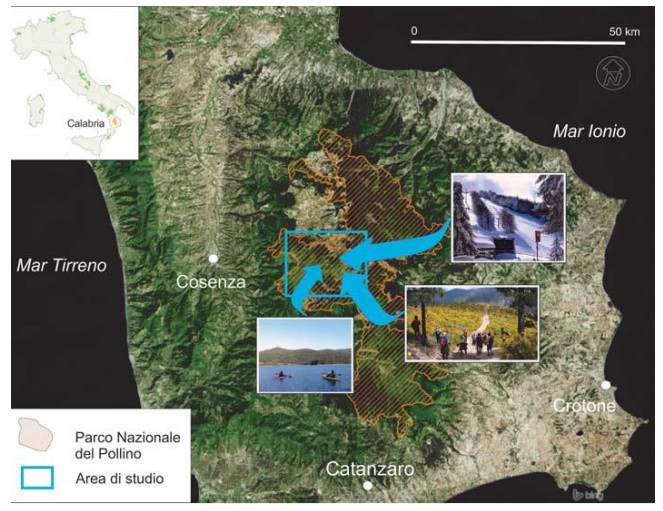









 DownLoad:
DownLoad:
